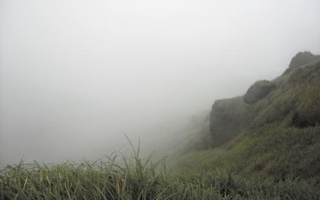“Blessed Lord, what it is to be old;
Be the teller, and not the told,
Be serene in the wake,
Of a triumph, mistake,
Or life’s rainbows, with no pots of gold.”
I’m standing in front of the tombstone of 19th-century poet David T.W. McCord ’21 in Mount Auburn Cemetery. As I had been wandering the cemetery, a woman asked me if I was looking for any grave in particular. No, I said, I had just come to the cemetery to explore, and she smiled and told me that McCord’s grave was inscribed with the cemetery’s most poignant epithet. The first verse, about youth, comes from a book of children’s poems; the second, about old age, McCord wrote as a response.
As I continue my walk, I reach a valley called “The Dell,” a favorite spot of frequent visitors to Mt. Auburn. Encased by steep walls and stately oaks, it is the lowest part of the cemetery. It is silent. It is hard to believe that I am surrounded by a city of millions of breathing, crying, laughing, living humans.
I rarely ever feel this kind of solitude at Harvard. There is the constant music of earbuds and street musicians, the fragrance of cinnamon rolls at Au Bon Pain, the sight of a student going from Point A to Point B while gesticulating wildly and holding a Very Important Conversation on her phone. There are meetings, classes, appointments, lunches, information sessions, parties. Stimulation is in high supply.
Two miles away from Harvard Yard, I’m standing among the corpses buried on Mt. Auburn Cemetery’s Harvard Hill. This spot was once the resting place of students and faculty who died far from home. Now the Hill has metamorphosed into the ultimate form of tenure, reserved for members of the Harvard faculty elected by the Harvard Corporation. The tufted peak of Memorial Hall peeks from behind thick oak branches. It is a quiet Sunday morning, and I have chosen to spend it with the dead. Surprisingly, their resting place is not morose. Mt. Auburn shows that a cemetery need not be like the dark burial grounds of film and literature; instead, it can be the perfect place for the young, old, or dead to “be serene in the wake of a triumph, mistake, / Or life’s rainbows with no pots of gold.”
DANCING SUNLIGHT
Most Harvard students will never enter a cemetery. Why would they? From thousands of diverse backgrounds come students who gained admission for being full of life, for their drive toward activity and cravings for new experiences. I ask brightly-dressed Bree Harvey, Mt. Auburn’s Vice President of External Affairs, why she thinks Mt. Auburn is not often visited by students.
“Even though a lot of people know that it is a famous cemetery with famous people buried here, they pass it on Mt. Auburn Street and think that it looks ominous and foreboding,” she says. “Ironically, the big granite gate we built to attract people actually scares them.” According to Harvey, cultural depictions of graveyards contribute to this misperception. Think Sad Hill Cemetery in “The Good, the Bad, and the Ugly,” or really anything Stephen King has written.
Mt. Auburn is more like a park than a crypt. It is 175 acres of winding paths, dignified trees, whispery breezes, and shimmering lakes. The land, called “Stone’s Wood,” used to be beloved by Harvard students as the perfect place to take respite from the bustle of 19th-century life, and the Cemetery was created in 1831 to ensure that the growing cities of Cambridge and Watertown would not envelop the forest’s beauty.
The founders were successful in their efforts. The sunlight dances through orange and yellow leaves. There are no black, crooked tombstones, only monuments of angels and reeds and even the occasional sphinx. Mt. Auburn looks like a park covered in sculpture.
Interestingly enough, the atmosphere of the rural cemetery is derived from its brethren institution, the public park. “It’s not so much that Mt. Auburn looks like a park, but that parks were created to look like cemeteries,” Harvey says. “When public parks, such as Central Park, started to be founded in the mid-19th century, cemeteries went back to being viewed as merely a place to bury the dead.”
Read more in Arts
Shapiro Joins Artists in French Order of MeritRecommended Articles
-
 The Community of All We Can See
The Community of All We Can See -
BREAKING NEWS: Student Hit by Truck on Mt. Auburn StreetA female student was hit by a truck near the intersection of Mt. Auburn Street and Dunster Street yesterday at ...
-
Kirkland Sophomore Injured in AccidentA Harvard undergraduate was hit by a moving truck near the intersection of Mt. Auburn Street and Dunster Street yesterday at approximately 4:30 p.m.
-
Structures in Time & Place: Snapshots of the Harvard Hillel's Construction"For historical reasons Jews did not build impressive monuments in stone and wood, but concentrated their creative genius on constructing inspiring structures in time."
-
Students Art Show Gets A New LookThe 4th Annual Harvard Student Art Show will take place in a gallery on Mount Auburn Street this year.
-
Tràta, Someone’s Favorite Restaurant, Dies At Age 4“That Place Next To Daedalus” died August, 2012 in its home on Mt. Auburn St. It was four years old.














